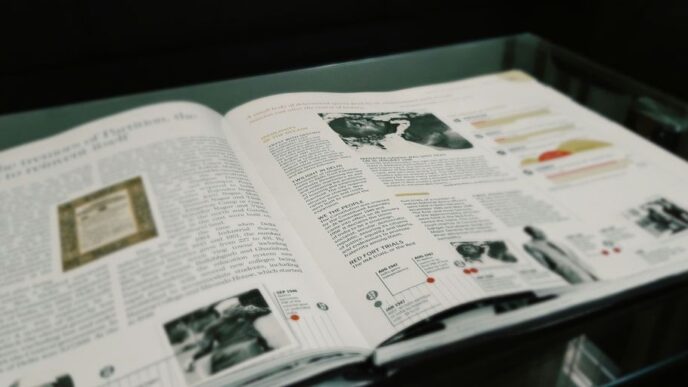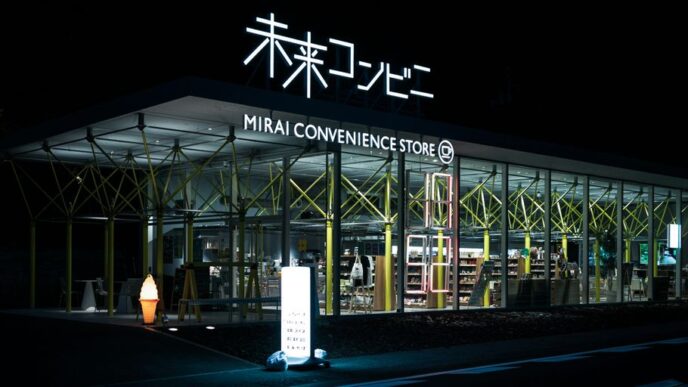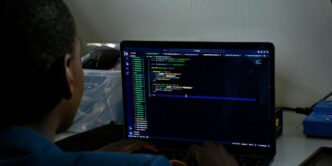This article examines how artificial intelligence (AI) is changing the way we ensure food safety, particularly in detecting Salmonella outbreaks. With traditional methods often lagging behind, AI offers new solutions that can help identify contamination before it leads to illness. By integrating AI technologies into food safety practices, we can create a more proactive approach to hygiene and safety in the food industry.
Key Takeaways
- AI can quickly detect Salmonella outbreaks, reducing health risks.
- Using AI leads to faster and more accurate food inspections.
- Real-time data helps food producers respond quickly to contamination.
- AI technologies improve traceability in the food supply chain.
- Predictive analytics can foresee potential food safety issues.
The Role of AI in Detecting Salmonella Outbreaks
Traditional Methods vs. AI Approaches
Traditional methods for detecting Salmonella often involve time-consuming processes like microbiological culturing. These methods can take days to yield results, which delays response times in food safety. In contrast, AI approaches can analyze data in real-time, allowing for quicker identification of potential outbreaks. This shift from reactive to proactive measures is crucial in preventing widespread contamination.
Case Studies of AI in Action
Several case studies highlight the effectiveness of AI in detecting Salmonella outbreaks:
- Machine Learning Models: These models analyze historical data to predict potential contamination events.
- Real-Time Monitoring: AI systems can monitor food production lines continuously, identifying anomalies that may indicate contamination.
- Predictive Analytics: By leveraging data from various sources, AI can forecast outbreaks before they occur, allowing for timely interventions.
Benefits of AI in Early Detection
The integration of AI in food safety offers numerous benefits:
- Faster Response Times: Immediate data analysis leads to quicker identification of contamination sources.
- Improved Accuracy: AI reduces human error in data interpretation, enhancing the reliability of results.
- Cost Savings: Early detection minimizes the financial impact of recalls and production shutdowns.
By advancing food security, AI plays a vital role in real-time pathogen detection and risk assessment, transforming how we approach food safety.
AI Technologies Revolutionizing Food Safety
Automated Inspection and Quality Control
AI technologies are changing how we ensure food safety. Automated inspection systems can quickly check for contaminants, making the process faster and more reliable. These systems use cameras and sensors to detect issues that human inspectors might miss. Here are some key benefits:
- Speed: Inspections can be done in real-time.
- Accuracy: AI reduces human error.
- Cost-Effective: Less need for manual labor.
Predictive Analytics for Inspection Planning
Predictive analytics helps food companies plan inspections better. By analyzing past data, AI can predict when and where problems might occur. This proactive approach can prevent contamination before it happens. Some important points include:
- Historical Data: AI uses past incidents to forecast future risks.
- Resource Allocation: Companies can focus their resources where they are needed most.
- Improved Safety: Early warnings can save lives.
Natural Language Processing for Compliance Analysis
Natural Language Processing (NLP) is another AI tool that helps in food safety. It can analyze documents and reports to ensure compliance with safety regulations. This technology can:
- Identify Violations: Quickly spot areas where companies are not following rules.
- Streamline Reporting: Make it easier to generate compliance reports.
- Enhance Communication: Improve dialogue between regulators and food producers.
By harnessing AI to safeguard food safety in the face of challenges, we can create a more secure food supply chain.
In summary, AI technologies are not just tools; they are transforming the food safety landscape, making it safer and more efficient for everyone involved.
Enhancing Traceability with AI in Food Supply Chains

Real-Time Monitoring and Data Analysis
AI technologies are changing how we track food products. With real-time monitoring, businesses can see where their food comes from and how it’s handled. This helps in quickly identifying any problems, like contamination. Here are some key tools used:
- RFID technology: Helps track products throughout the supply chain.
- IoT sensors: Monitor conditions like temperature and humidity.
- Blockchain: Provides a secure way to record and share information about food products.
Blockchain and IoT Integration
Integrating blockchain and IoT technologies allows for better traceability. For example, Chipotle has invested in an AI supply chain platform that uses Lumachain’s software to monitor the origin, location, and condition of each item in real time. This means that if there’s a problem, they can quickly trace it back to the source.
Case Examples of Improved Traceability
Several companies are already using AI to enhance traceability:
- Walmart: Uses blockchain for secure food traceability.
- Nestlé: Implements IoT devices to monitor food conditions.
- Tyson Foods: Uses AI analytics to predict potential food safety issues.
By using AI, companies can respond faster to food safety issues, ensuring safer food for everyone.
Predictive Analytics for Proactive Food Safety
Leveraging Historical Data for Predictions
Predictive analytics is a game changer in food safety. By analyzing past data, businesses can identify potential risks before they become serious problems. Here are some key benefits:
- Early detection of contamination sources.
- Optimized resource allocation for inspections.
- Improved decision-making based on data insights.
AI Models for Risk Assessment
AI models can assess risks by looking at various factors, such as:
- Production methods.
- Transportation conditions.
- Historical safety data.
These models help prioritize inspections and interventions, making food safety more effective.
Tools and Platforms for Predictive Analytics
Several tools can enhance predictive analytics in food safety:
- Predictive analytics platforms that use machine learning.
- IoT-based monitoring systems for real-time data.
- Data integration platforms that combine information from different sources.
By utilizing predictive analytics, businesses can excel in food safety and quality assurance, ensuring a safer food supply for everyone.
Challenges and Considerations in Implementing AI
Data Privacy and Security Concerns
Implementing AI in food safety raises serious concerns about data privacy and security. With the increasing use of IoT devices, protecting sensitive information is crucial. Companies must adopt strong security measures to safeguard data related to food safety and supply chain operations.
Regulatory Compliance
Navigating the complex landscape of regulations is another challenge. Organizations need to ensure that their AI systems comply with existing laws and standards. This often requires collaboration with regulatory bodies to align AI practices with legal requirements.
Balancing Innovation with Ethical Use
As AI technologies evolve, ethical considerations become paramount. Companies must ensure that their AI applications are used responsibly, avoiding misuse of data and maintaining consumer trust. This includes:
- Establishing clear guidelines for data usage.
- Training staff on ethical AI practices.
- Engaging with stakeholders to address concerns.
In summary, while AI offers significant benefits for food safety, addressing these challenges is essential for successful implementation. Companies must prioritize data security, regulatory compliance, and ethical considerations to harness AI’s full potential effectively.
| Challenge | Description |
|---|---|
| Data Privacy and Security | Protecting sensitive information from breaches and unauthorized access. |
| Regulatory Compliance | Ensuring AI systems meet legal standards and regulations. |
| Ethical Use of AI | Using AI responsibly to maintain consumer trust and avoid misuse of data. |
Future Trends in AI for Food Safety
Advancements in AI Technologies
The future of food safety is bright with AI technologies leading the way. Innovations in machine learning and data analytics are set to transform how we ensure food safety. Here are some key advancements to watch for:
- Real-time data analysis for quicker decision-making.
- Enhanced predictive models that can foresee potential contamination.
- Integration of IoT devices for continuous monitoring.
Potential Impact on Food Safety Standards
As AI continues to evolve, its impact on food safety standards will be significant. Some potential changes include:
- Stricter compliance requirements based on AI insights.
- More transparent supply chains due to improved traceability.
- Enhanced consumer trust through better safety measures.
Collaboration Between Industry and Regulators
To fully harness the power of AI in food safety, collaboration is essential. This includes:
- Joint efforts between tech companies and food producers.
- Regulatory bodies adapting to new technologies.
- Sharing of data and best practices across the industry.
The integration of AI in food safety is not just about technology; it’s about creating a safer food environment for everyone. Transparency and collaboration will be key to achieving this goal.
AI-Driven Solutions for Food Safety Incidents
Early Warning Systems for Contamination
AI technology is changing how we handle food safety. Early warning systems can help detect contamination before it spreads. These systems use various tools to monitor food safety in real-time. Here are some key components:
- IoT sensors that collect environmental data automatically.
- Predictive analytics platforms that forecast potential food safety issues.
- Blockchain technology for better traceability of food products.
AI-Assisted Risk Assessment
AI can also help with risk assessment in food safety. By analyzing different factors, AI models can prioritize inspections. Some tools used include:
- Risk assessment platforms that evaluate contamination risks.
- Predictive analytics tools that use past data for better predictions.
- Custom machine learning models tailored to specific food safety needs.
Real-World Applications and Success Stories
Many companies are already using AI to improve food safety. For example, some businesses have successfully implemented AI systems to:
- Quickly identify sources of contamination.
- Reduce the time needed for inspections.
- Enhance overall food safety compliance.
By using AI, the food industry can shift from a reactive approach to a proactive one, ensuring safer food for everyone.
In summary, AI-driven solutions are essential for tackling food safety incidents. They not only help in early detection but also improve overall safety standards in the food supply chain. The integration of AI technologies is a game-changer for food safety.
Conclusion
In summary, AI is changing the way we handle food safety. By using smart technology, we can find problems like Salmonella before they affect people. This means fewer sicknesses and safer food for everyone. As we continue to use AI, we can expect better tracking of food safety issues and quicker responses to any problems. The future looks bright for food safety, thanks to these advancements. With ongoing improvements, we can protect public health and keep our food supply safe.
Frequently Asked Questions
What is AI’s role in finding Salmonella outbreaks?
AI helps spot Salmonella outbreaks faster than traditional methods by analyzing data quickly and spotting patterns.
How does AI improve food safety?
AI makes food safety better by using technology to monitor and inspect food, predict problems, and keep track of products.
What are the benefits of using AI for food inspections?
Using AI for food inspections can save time, reduce mistakes, and help find issues before they become serious.
Can AI help with food supply chain tracking?
Yes, AI can track food from farms to stores in real-time, making it easier to find where problems happen.
What challenges does AI face in food safety?
AI faces challenges like keeping data safe, following rules, and making sure it’s used ethically.
What does the future hold for AI in food safety?
The future looks bright for AI in food safety, with new technologies improving standards and better collaboration between businesses and regulators.













